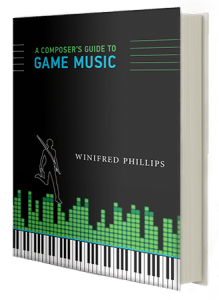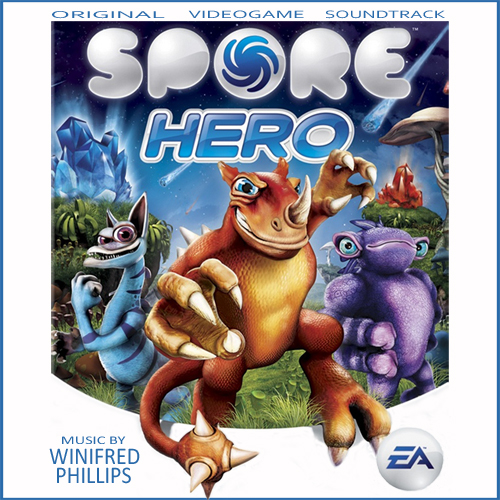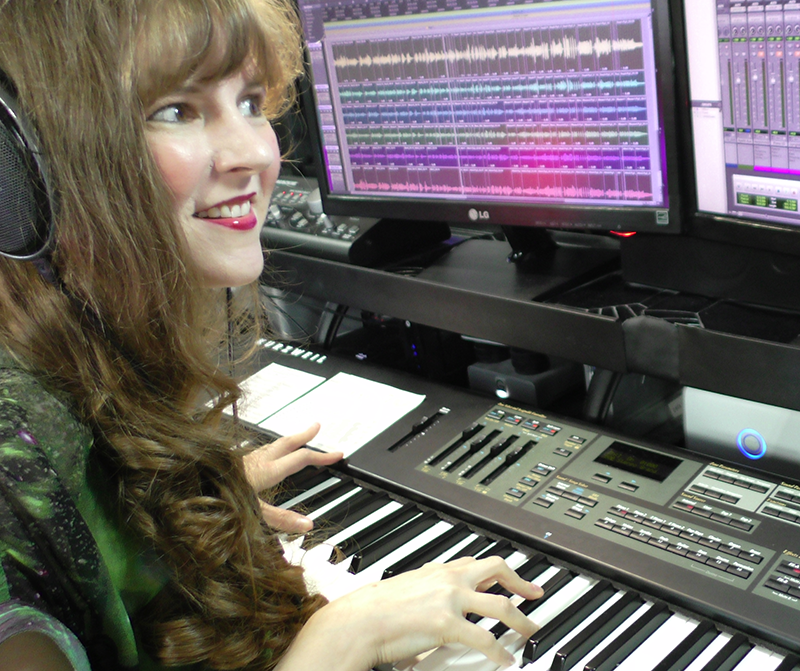Trending
Opinion: How will Project 2025 impact game developers?
The Heritage Foundation's manifesto for the possible next administration could do great harm to many, including large portions of the game development community.

Featured Blog | This community-written post highlights the best of what the game industry has to offer. Read more like it on the Game Developer Blogs or learn how to Submit Your Own Blog Post
Game music composer Winifred Phillips breaks down the popular horizontal re-sequencing technique, with music examples and a video tutorial showcasing techniques from one of her projects (The Spore Hero video game from Electronic Arts).


Welcome back to my four-part article series presenting videos and helpful references to aid aspiring game music composers in understanding how interactive music works. In Part One of this series, we took a look at a simple example demonstrating the Horizontal Re-Sequencing model of musical interactivity, as it was used in the music I composed for the Speed Racer Videogame from Warner Bros. Interactive. Now let's turn our attention to a more complex example of horizontal re-sequencing as demonstrated by the interactive music of the Spore Hero game from Electronic Arts.
In the video embedded later in this article, you'll see that I've used as an example a gameplay sequence involving multiple music files that react on-the-fly to the state of gameplay. In my book, A Composer's Guide to Game Music, I address several similar scenarios that involve groups of music files designed to be triggered by in-game occurrences. It's always an interesting challenge to compose music for such a system. A Composer's Guide to Game Music describes the process this way:
 "In order for horizontal re-sequencing to be successful, all of the musical segments must flow in and out of each other without giving any indication that the music has ever abruptly changed. The goal is to create the impression of one seamless musical composition that is somehow executing split-second reactions and adjustments to the state of gameplay."
"In order for horizontal re-sequencing to be successful, all of the musical segments must flow in and out of each other without giving any indication that the music has ever abruptly changed. The goal is to create the impression of one seamless musical composition that is somehow executing split-second reactions and adjustments to the state of gameplay."
In Spore Hero there are quite a few in-game situations calling for such an interactive musical approach. The ambitious interactive music system for Spore Hero was designed by the audio team at Electronic Arts, led by accomplished sound designer Jean-François Tremblay. Composing music for this complex music system was a great privilege, and I had a lot of fun working with Tremblay and his sound design team. Together, our work was recognized with nominations for Best Original Score from such top awards organizations as the International Film Music Critics Awards, the Hollywood Music in Media Awards, and the Movie Music UK Music Awards. This recognition is a testament to the innovative, resourceful music system developed by the audio pros on the Spore Hero sound design team. It was such an honor to work with them!
In the video, we get to take a closer look at the functioning of the game's music system. The interactivity focuses most on the awesome minigames that the Spore Hero team designed for the game. Each minigame is tied closely to the quirky nature of the game's fictional world (which was first established in the famous Spore video game released in the previous year). The music of the game is constructed to support a series oddball objectives, including an amusing version of interpersonal conflict - here's the way it's described in the video:
"One of the recurring activities in Spore Hero is a dancing mini-game. Your creature encounters another alien who essentially challenges you to a dance-off." The video proceeds to show a series of music tracks while describing how each are categorized: "Here we have five music files labeled: Intro, Dance, Special Move, Failure, and Success. All of these are music chunks within the horizontal re-sequencing model. They can be arranged by the game engine according to the state of gameplay."
 The video goes on to demonstrate how the music chunks of this Spore Hero track function - using the popular Pro Tools application to display a user-friendly visual representation of the music content.
The video goes on to demonstrate how the music chunks of this Spore Hero track function - using the popular Pro Tools application to display a user-friendly visual representation of the music content.
By observing how the segments interact, we can better understand the way the music integrates with gameplay (as described in the video):
"All of these individual segments within the dance minigame allow the music to react to the state of gameplay, creating a more satisfying experience for the player."
Watching the video helps to make this interactive music system more understandable and less intimidating, so let's take a look!
I hope the video was helpful in further understanding how horizontal re-sequencing works and supports gameplay! In case you'd like to learn more about how the music of Spore Hero was made, here's a short behind-the-scenes documentary about the music of the game:
If you'd like to read a bit more about the inspiration that drove the style and structure of the Spore Hero musical score, you can check out this interview conducted by music journalist Simon Smith of Higher Plain Music.
Finally, if you'd like to hear some of the music of Spore Hero in a very different context, take a look at this official trailer for the smash-hit Jungle Book movie that was released this past April. The trailer licensed the main theme music from Spore Hero and used it to create a primitive and mysterious atmosphere while the movie's director Jon Favreau explained how the amazing visual effects were achieved:
In the next article, we'll be moving on to the vertical layering model for musical interactivity, as it was implemented in The Maw video game from Twisted Pixel games. In the meantime, please leave any questions or thoughts in the comments section below!
 Winifred Phillips is an award-winning video game music composer whose most recent project is the triple-A first person shooter Homefront: The Revolution. Her credits include five of the most famous and popular franchises in video gaming: Assassin’s Creed, LittleBigPlanet, Total War, God of War, and The Sims. She is the author of the award-winning bestseller A COMPOSER'S GUIDE TO GAME MUSIC, published by the Massachusetts Institute of Technology Press. As a VR game music expert, she writes frequently on the future of music in virtual reality video games.
Winifred Phillips is an award-winning video game music composer whose most recent project is the triple-A first person shooter Homefront: The Revolution. Her credits include five of the most famous and popular franchises in video gaming: Assassin’s Creed, LittleBigPlanet, Total War, God of War, and The Sims. She is the author of the award-winning bestseller A COMPOSER'S GUIDE TO GAME MUSIC, published by the Massachusetts Institute of Technology Press. As a VR game music expert, she writes frequently on the future of music in virtual reality video games.
Follow her on Twitter @winphillips.
Read more about:
Featured BlogsYou May Also Like